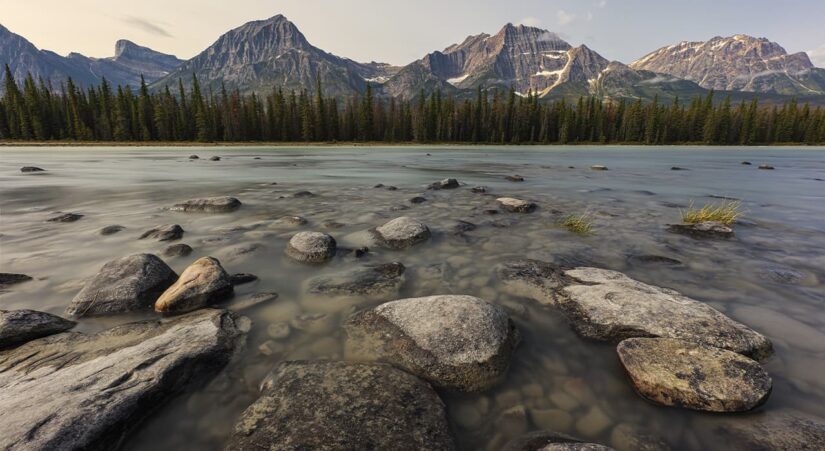Jasper National Park
Jasper National Park covers 10,878 km². These places are very popular with tourists. Travelers are attracted by high waterfalls, turquoise lakes, clear rivers, picturesque glaciers, deep canyons, mighty coniferous forests and blooming alpine meadows. More than 2,150,000 tourists visit the reserve each year, making Jasper Park the most visited reserve in Canada.
The park is divided into several zones. The first zone includes the rarest natural and historical sites. They include relict spruces in the Sanuapta Valley, the age of which exceeds 700 years. The Surprise Valley is also included, with the Jasper fur trapper’s house museum and a cave with ancient cave paintings. The second zone occupies most of Jasper Park. It covers the places where the valuable species of animals, so the entrance of tourists to it is partially restricted, and entrance by car is prohibited completely. The third zone of the reserve consists of natural complexes, which are maintained in their natural state. You can cross this zone, but only on foot, on horseback or by bicycle. The fourth zone is for tourists’ recreation and educational programs, and the fifth zone provides various types of recreational and health services.
The Plants and Animals of Jasper
The nature of Jasper National Park is breathtaking. The air of the mountain valleys is filled with the scent of pine needles. Giant firs, several species of pines, larches, Douglas firs, Engelmann spruce, and junipers grow in the reserve.
Many animals here are not afraid of humans. Along the roads, where cars are constantly driven, you can see wapiti deer, colts and ibex grazing peacefully. Chipmunks and red squirrels live near places where travelers visit every day. These animals are not tame, but they don’t want to get away from tourists either, so professional animal photographers like to work in the national park.
Jasper Park’s resident wolves, wolverines, American martens, and great voles are secretive and tend to stay out of sight. But Canadian lynxes and grizzly bears are not difficult to photograph from a distance of 300 meters. Rocky Mountain rivers and lakes are home to beavers and muskrats, and the forests are home to moose and woodchucks. In addition, there are about 200 species of birds within the boundaries of the reserve.
Athabasca Glacier
Jasper National Park boasts one of the oldest glaciers on Earth. It appeared more than 10,000 years ago. Athabasca Glacier, like many other glaciers, has been rapidly melting in recent years. He has lost about half of its volume, and today the length of Athabasca is less than 6 km.
Under the rules of the national park for safety reasons, walking on the glacier without a guide is prohibited. Travel on the glacier on foot, on special small cars and buses-icebreakers, moving on wide tires or caterpillar tracks.
Above the tongue of the glacier is the beautiful Snow Dome peak. It is interesting because the streams running from it are the sources of the rivers that feed the three oceans – the Arctic, the Pacific and the Atlantic.
